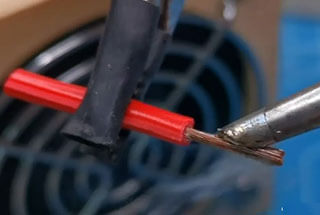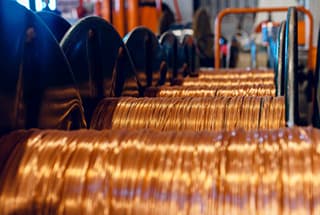
Have you ever wondered if using an electric soldering iron could be harmful to your health? This article tackles the potential toxicity of electric soldering, examining the risks associated with lead-based and lead-free solder wires. Learn about the dangers of lead exposure, the impact of fumes, and essential safety measures to protect yourself. Discover how proper precautions can make your soldering work safer and healthier.


Some netizens complained that they worked in a PCB factory and used an electric soldering iron to weld tin for a whole year. They felt uncomfortable in their bodies and had some bloating in the abdomen. Is welding tin toxic? Will it cause lead poisoning?
In fact, it depends on whether lead-free solder wire or lead solder wire is used during work and regular blood lead checks. If it does not exceed the standard, there will be no problem at all. Is welding tin toxic?
Normally, if national standards are followed for protection and raw material procurement, soldering tin will not cause significant harm. Now, almost all products used are lead-free.
Lead is a toxic substance. Excessive absorption by the human body can cause lead poisoning, and even low doses may affect human intelligence, nervous system, and reproductive system.
Tin-lead alloy is commonly used as solder because it has good electrical conductivity and low melting point. Its toxicity mainly comes from lead. The lead fumes produced during soldering are easily lead to lead poisoning.
Metal lead can produce lead compounds, which are classified as hazardous substances. In the human body, lead can affect the central nervous system and kidneys.
The environmental toxicity of lead to some organisms has been widely confirmed. When the blood lead concentration exceeds 10μg/dl, sensitive biochemical effects will occur. if the blood lead concentration exceeds 60-70μg/dl for a long time, it will cause clinical lead poisoning.
Those with lead are definitely toxic. Not to mention whether welding tin has a significant impact on the body, but for general metals, excessive amounts can also be toxic. Smoke will appear when welding tin, which contains harmful elements to the body.
When working, it is best to wear a mask, but there will still be some impact. Of course, if lead-free solder wire can be used, it will be much safer than using lead solder wire.

The material used in soldering tin with an electric soldering iron contains other metals besides tin, although tin is the main component. They are mainly divided into leaded and lead-free (environmentally friendly).
With the introduction of the EU ROHS standard, more and more PCB welding factories have chosen lead-free environmentally friendly solder wire.
Leaded solder wire is also gradually being replaced and cannot be exported if it is not environmentally friendly. Lead-free solder paste, lead-free solder wire, and lead-free solder bar are currently the main products on the market.
Simply put, because the melting point of the solder is low, and it contains about 60% lead and 40% tin, the solder itself is toxic. Most of the solder on the market is hollow, with rosin inside, so the gas you are talking about is probably the rosin vaporized when the solder melts during soldering.
The gas emitted by the rosin is slightly toxic, and the gas is quite unpleasant. The main hazard of soldering during soldering is lead fumes, even if it is lead-free solder, which contains a certain amount of lead.
The limit of lead fumes in GBZ2-2002 is very low and highly toxic, and it needs to be protected. Due to the damage caused to human health and the environment during the welding process, protection of welding workers and the environment has been enforced by legislation in Europe.
Welding without any protective measures is not allowed. ISO14000 standards have clear provisions for handling and protecting pollution during the production process.
Tin contains lead, and solder was classified as an occupational hazard category (in the national occupational disease directory) due to the lead in solder wire in the past. Now, most companies use lead-free solder wire, the main component of which is tin. The disease control center measures tin dioxide, not listed in the national occupational disease directory.
In general, the lead fumes in the lead-free process (lead-free) will not exceed the limit, but there are still other hazards of soldering, such as soldering flux (rosin-based substances) with certain hazards, depending on the specific situation.
Employees can check the label of the solder issued and which category it belongs to. This can be used to demand that the company make improvements (suggestions can be made to the internal labor union of the factory).
If the solder issued contains lead, it is definitely harmful to the body. Over time, it will accumulate in the body and cause significant damage to the immune system and nervous system.
Lead-free solder wire is environmentally friendly, but it is also harmful to the human body. The low lead content of lead-free solder wire does not mean that it does not contain lead.
Compared to leaded solder wire, lead-free solder wire has smaller pollution to the environment and the human body. The gas produced during soldering is toxic, including rosin oil and zinc chloride vapor.

Firstly, PCB factories should use ROHS solder wire when using an electric soldering iron to solder components and take preventive measures:
For example, wearing gloves, masks or gas masks, paying attention to ventilation in the workplace, good exhaust system, cleaning after work, and drinking milk can prevent the toxicity of lead in solder.








